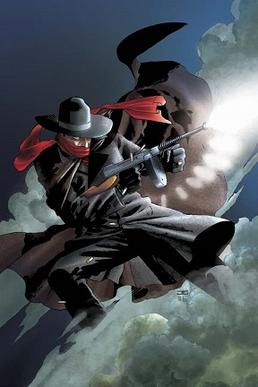
The Shadow is a fictional character created by American magazine publishers Street & Smith and writer Walter B. Gibson. Originally created to be a mysterious radio show narrator, and developed into a distinct literary character in 1931 by Gibson, The Shadow has been adapted into other forms of media, including American comic books, comic strips, serials, video games, and at least five feature films. The radio drama included episodes voiced by Orson Welles.
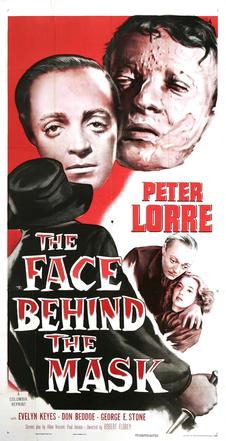
The Face Behind the Mask is a 1941 American crime horror film directed by Robert Florey and starring Peter Lorre, Evelyn Keyes and Don Beddoe. The screenplay was adapted by Paul Jarrico, Arthur Levinson, and Allen Vincent from the play Interim, written by Thomas Edward O'Connell (1915–1961).
Walter Brown Gibson was an American writer and professional magician, best known for his work on the pulp fiction character The Shadow. Gibson, under the pen-name Maxwell Grant, wrote "more than 300 novel-length" Shadow stories, writing up to "10,000 words a day" to satisfy public demand during the character's golden age in the 1930s and 1940s. He authored several novels in the Biff Brewster juvenile series of the 1960s. He was married to Litzka R. Gibson, also a writer, and the couple lived in New York state.
Poverty Row is a slang term for small Hollywood studios that produced B movies from the 1920s to the 1950s, typically with much smaller budgets and lower production values than those of the major studios. Although many of these studios were based in the vicinity of Gower Street in Hollywood, the term does not necessarily relate to any specific physical location.

The Shadow Strikes is a 1937 black and white American film based on the story Ghost of the Manor written by Walter B. Gibson under the pen name Maxwell Grant. The Shadow was featured on a popular radio show and also as a pulp magazine crime fighter.

Kane Richmond was an American film actor of the 1930s and 1940s, mostly appearing in cliffhangers and serials. He is best known today for his portrayal of the character Lamont Cranston in The Shadow films in addition to his leading role in the successful serials Spy Smasher and Brick Bradford.

Time to Kill is an American mystery film directed by Herbert I. Leeds. It is the first screen adaptation of Raymond Chandler's novel The High Window, which was remade five years later as The Brasher Doubloon. The detective was changed from Philip Marlowe to Michael Shayne for this version, with Lloyd Nolan playing the part and Heather Angel in a rare turn as leading lady. It is also the final Michael Shayne film starring Lloyd Nolan made at Fox, who closed down their popular B movie unit which included Mr. Moto, Charlie Chan, and the Cisco Kid. In 1946 the series would be reborn at Producers Releasing Corporation with Hugh Beaumont taking over the role.

Mystery Liner is a 1934 American Pre-Code film directed by William Nigh, starring Noah Beery, Sr., and based on an Edgar Wallace story originally published in the Saturday Evening Post in 1924. The film was entered as a feature attraction at the 1934 International Exhibition of Cinematographic Art in Venice, Italy, the forerunner of the Venice Film Festival.
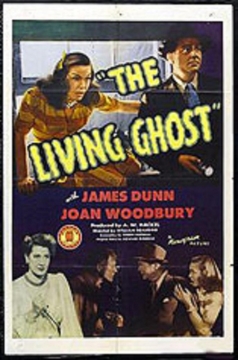
The Living Ghost is a 1942 American mystery-drama film directed by William Beaudine and produced by Monogram Pictures. Starring James Dunn and Joan Woodbury, the film incorporates elements of the horror genre as it follows an ex-private detective who is called in to investigate why a banker has turned into a zombie. As the detective shares wisecracks with the banker's cheeky secretary, the two fall in love. The film was distributed in the United Kingdom under the title Lend Me Your Ear, and later released on home video as A Walking Nightmare.

Murder with Pictures is a 1936 American crime-mystery film based on a story by George Harmon Coxe. The film was directed by Charles Barton, the screenplay was written by Jack Moffitt and Sidney Salkow. Lew Ayres starred as Kent Murdock, Gail Patrick starred as Meg Archer; Paul Kelly and Benny Baker also appeared in the film. The film was released September 25, 1936.

Six Bridges to Cross or 6 Bridges to Cross is a 1955 American film noir crime film directed by Joseph Pevney and starring Tony Curtis, George Nader and Julie Adams. Six Bridges to Cross is based upon the famous 1950 Great Brink's Robbery of Boston, Massachusetts in which the thieves made off with roughly $2.5 million.

Blondie Meets the Boss is a 1939 American comedy film directed by Frank R. Strayer and starring Penny Singleton and Arthur Lake.
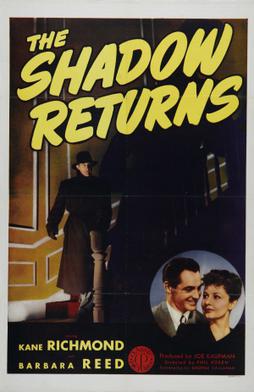
The Shadow Returns is a 1946 American comedy crime film directed by Phil Rosen and starring Kane Richmond, Barbara Read, and Tom Dugan. It features the pulp-fiction character The Shadow, already a popular hero of novels and a radio show. It was the first in a series of three films released by Monogram Pictures in 1946 starring Richmond in the role.
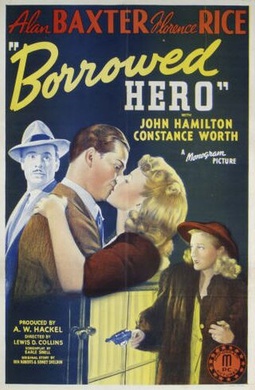
Borrowed Hero is a 1941 American crime film directed by Lewis D. Collins and starring Alan Baxter, Florence Rice and Constance Worth. It was distributed by Monogram Pictures.

The Lone Wolf in Mexico is a 1947 American black-and-white mystery-adventure film directed by D. Ross Lederman for Columbia Pictures. It features Gerald Mohr as the title character, detective Lone Wolf. Chronologically the third-to-last Lone Wolf film in Columbia's theatrical series, it was followed by The Lone Wolf in London later in 1947 and The Lone Wolf and His Lady in 1949.
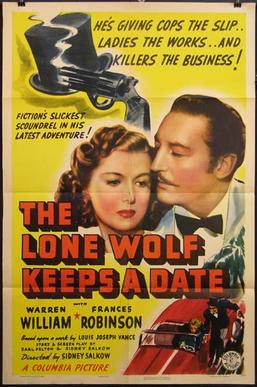
The Lone Wolf Keeps a Date is a 1940 American mystery crime film directed by Sidney Salkow and starring Warren William, Frances Robinson, Bruce Bennett and Eric Blore. It is the sixth Lone Wolf film produced by Columbia Pictures. It features William in his fourth appearance as the title character and Edward Gargan, Lester Matthews and Don Beddoe as the film's antagonists. The screenplay was written by Salkow and Earl Felton.
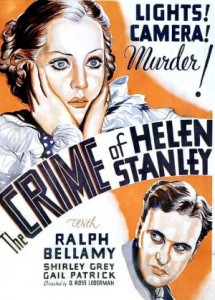
The Crime of Helen Stanley is a 1934 American pre-Code crime film directed by D. Ross Lederman and starring Ralph Bellamy, Shirley Grey and Gail Patrick. The film is also known as Murder in the Studio. It was the third in a series of four films featuring Bellamy as Inspector Trent of the NYPD following on from Before Midnight and One Is Guilty. The final film Girl in Danger in the sequence was released later in the year.

While the Patient Slept is a 1935 comedy murder mystery film directed by Ray Enright starring Aline MacMahon as a nurse/crime sleuth and Guy Kibbee as her boyfriend and police detective. It is based on the novel of the same name written by Mignon G. Eberhart.
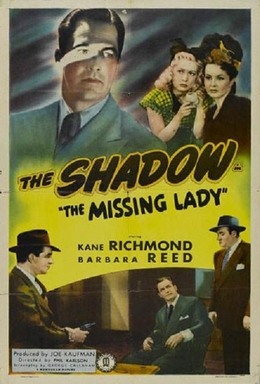
The Missing Lady is a 1946 American mystery film directed by Phil Karlson and starring Kane Richmond and Barbara Read. It was the third and final in a series of three films released by Monogram in 1946 starring Richmond as The Shadow, the others being The Shadow Returns and Behind The Mask.

With Love and Kisses is a 1936 American musical comedy film directed by Leslie Goodwins and starring Pinky Tomlin, Toby Wing and Kane Richmond. It was produced on Poverty Row as a second feature for release by Ambassador Pictures.


















